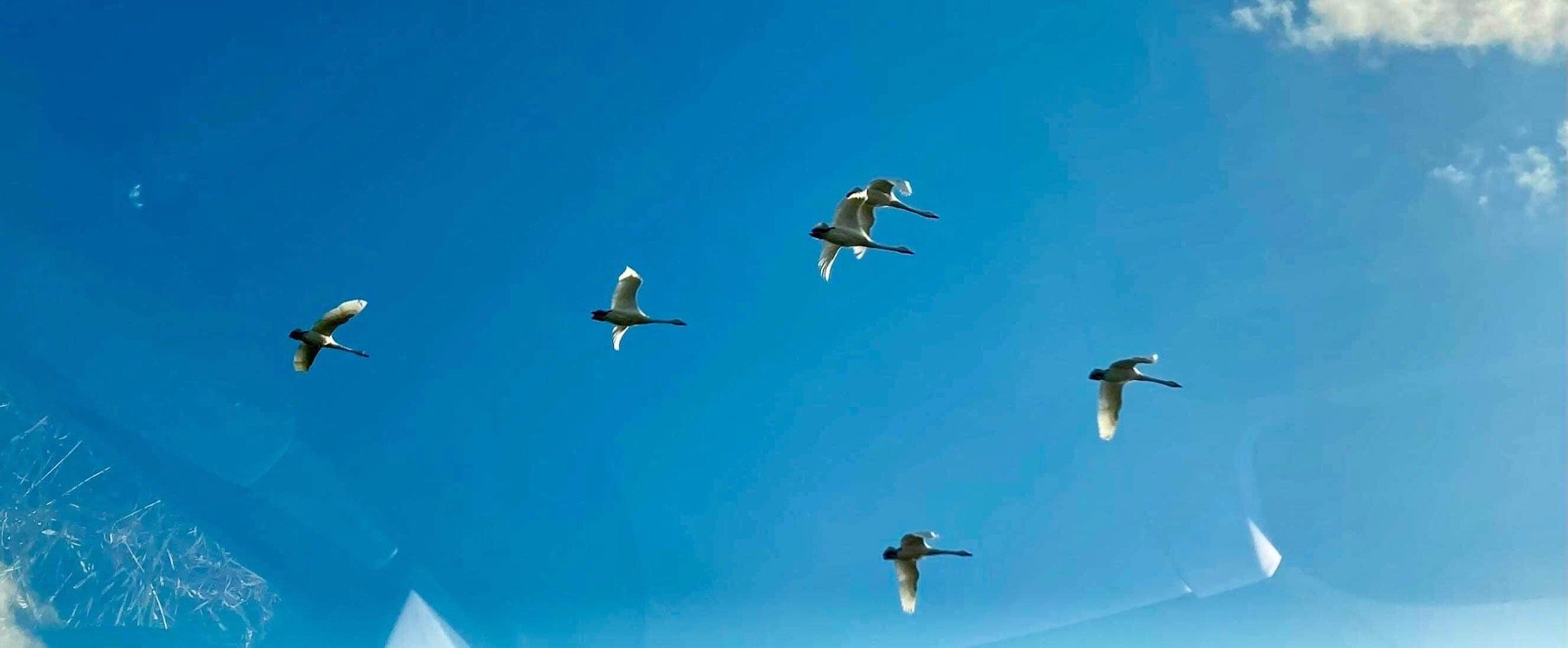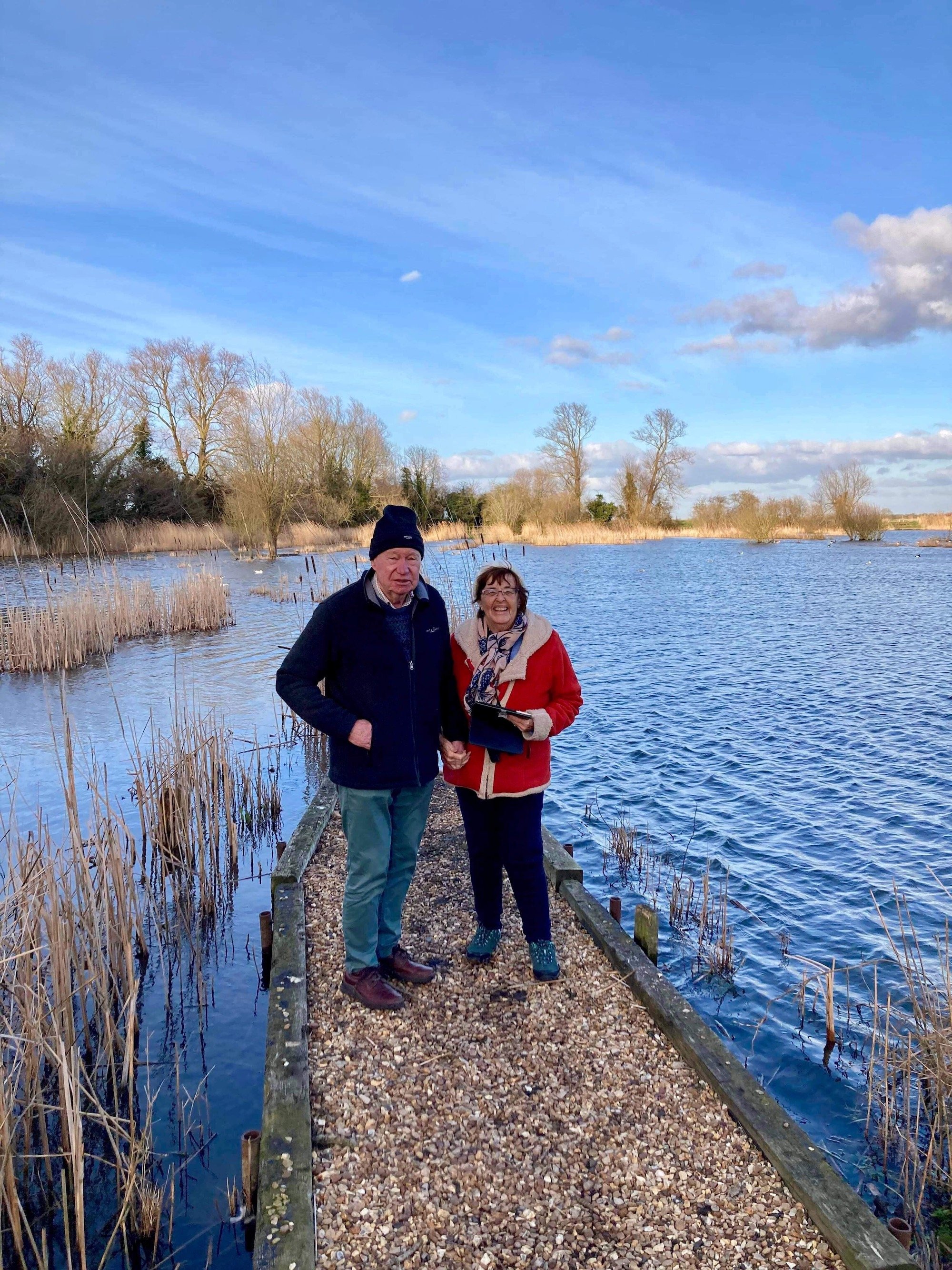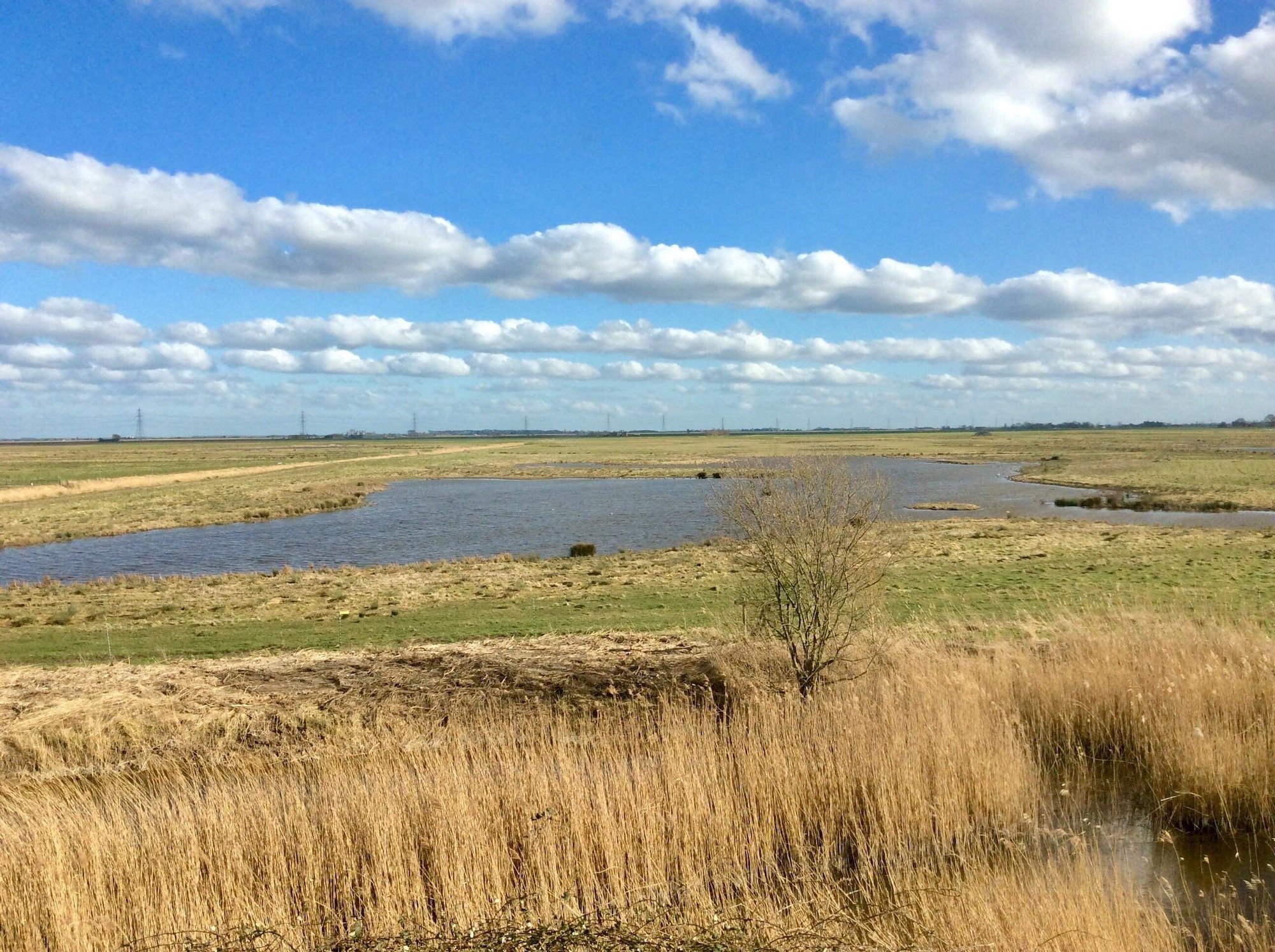A Visit to The Fens
The Great Ouse Washes, Manea Pit and Welney Wetland Trust
The Fenlands of Cambridgeshire and Norfolk provide a unique example of wide skies, with tumbling clouds racing above you over wide, green and recently ploughed fields, stretching to the distant horizon. A weekend walk across this unique mostly treeless countryside of rivers, marshes, wetlands and farmland would give my husband and myself, two novice birdwatchers, guided by my nephew, with a depth of local knowledge, having lived in and near these wild stretches of countryside over many years, a wonderful insight into fenland wildlife and habitat.
For those with a more technical turn of mind requiring a brief review of Fenland drainage engineering, a seventeenth century Dutch engineer named Cornelius Vermuyden was employed to master the devastating flooding of the River Ouse and create what he envisaged was a system of “summer lands“ for grazing within the Washes and “winter lands“ for arable farming outside the Washes.
These aims were achieved and improved upon over the following 350 years or so, and are still ongoing, and have principally been brought about by means of cutting three wide channels at different moments in Fenland history. These being known respectively as the Old Bedford river, the New Bedford river or Hundred Foot Drain ( the first Bedford river having had little success in controlling winter flooding) and a third cutting known as the Delph river which was completed later. Thus cuttings, drains, sluices and pumping stations large and small, have in time given the fenlands large shallow inland lakes in winter, known as Washes, reducing in level in the summer depending on summer rainfall. All of this amazing engineering over several hundred years has provided a paradise for overwintering and native bird species to graze the farmlands and to feed in the winter washes. A perfect habitat for wading birds, migratory birds and dedicated birdwatchers alike!
Our visit to The Fens was in marked contrast to our other activities on the previous day of our fascinating mini break and gave some much needed hours of spiritual calm! For whilst visiting a famous Second World War airfield at Biggin Hill the day before, we had been shown Spitfires and Hurricanes, those amazing machines that had defended Britain. We had been able to hold the armaments of those famous aircraft, 303 machine gun belts and bands of 20 mm cannon that would have been loaded into those very aircraft such as those positioned in front of us, their paintwork gleaming.
Our walk began in the pretty but rather isolated fenland village of Manea.
The two mile walk northwards from the village took us to our first fascinating destination, the Great Ouse Washes. The narrow undulating peat drove road, ( the undulations caused by the peat below drying out over the centuries) led us to the cutting known as the New Bedford River at Welches pumping station. This was an imposing red brick building sitting squarely on raised banks protecting the open Fenlands from devasting floods, but looking, however, very out of sympathy with the wild beauty surrounding it.
After a brief detour to the nearby RSPB hide and visitor centre, where we saw gold crest, tree sparrows and blue tits enjoying their morning brunch at the feeders located near the hide, we climbed the protective banks, crossed the bridge over the New Bedford River. We turned right along the far bank following a pretty riverside path, and crossed marshy banks on a raised boardwalk above golden rushes waving in the bracing easterly wind! We then climbed gently upward to a wonderfully positioned hide on the high Ouse washes, giving a view of a broad wave swept lake, surrounded by half drowned willows, and fingers of reed covered beds, stretching for several miles in different directions before us.
My nephew set up his newly acquired telescope, my husband took out a powerful pair of binoculars and a smaller somewhat neater, but less powerful, newly purchased pair was whisked out of my handbag by myself, and we then got down to a most thrilling session of bird watching!
We spent a wonderful morning absorbing the distant views and enjoying the astonishing wealth of bird life spread out before us. In the far distance surrounded by the choppy waves of the inland lake, grey lag geese and Canada geese were crowded together on distant sandy banks resting from their early morning feed on nearby farmers’ fields.
On a distant little stony beach adjacent to a rickety black wooden gate reaching up above the water, rare black tailed godwits were feeding, preparing for their arduous one stop migration to Iceland in a few days time. Closer at hand were coots, tufted ducks, red shank and moorhens. All of these being identified by the novice birdwatchers with the help of the WWT bird identification chart thoughtfully placed on the rear wall of the hide.
One highlight was seeing a nervous little weasel creeping down the nearby bank to our left in search of duck eggs for a late breakfast, only to be spotted by a protective and now angry moorhen mother who chased it back up the bank! Did that weasel shift!!
Lunch having been booked at a historic old coaching inn in the village of Welney, we reluctantly left our view over the great Ouse Washes and walked back to Manea village, enjoying en route delightful views across golden banks of rushes and the fast flowing New Bedford river. Edging the bank were some pretty cottages including a charming red tiled lock keeper’s cottage, and passing in front of them on this bright sunny morning was a pair of mallards swimming along in leisurely fashion, the male with its eye catching brightly coloured brilliant green plumage and his smaller and rather dowdy wife paddling along at the rear!
For the energetic walker it is about 5 miles to our next destination of Welney along winding fenland roads.
But for ourselves being only weekend visitors anxious to see as much as possible of these wild fenlands in a brief one day visit, our nephew drove us by car to the nearby village of Welney for our pub lunch, to be followed by an afternoon excursion to the nearby Wetlands Wildlife Trust visitor centre. I heartily recommend to all novice birdwatchers the lunch menu at the Lamb and Flag and a seat by a roaring log fire in the bar!
One rather strange synchronicity with the previous day’s visit to Biggin Hill, was the display of WW2 brass shell cases and 20 mm Spitfire cannon shells on shelves above the fireplace, below the huge stuffed pike in its glass display case! Their brass casings flickering in the light from the roaring fire. Shells and cannon two days running! An unexpected discovery in such a peaceful setting.
And so to the highlight of the day a visit to the Welney Wetland Centre. Despite some varieties of swans and geese having already departed on their spring migration to Iceland sufficient groups remained to make enjoyable viewing. It was particularly interesting to see the large groups of swans and geese feeding in the farmer’s fields nearby. And on distant sandbanks of the Washes crowds of geese and swans rested in the afternoon sunshine.
To enjoy even more birdwatching a large “scrape” has recently been dug near the wide viewing windows of the centre to watch not only swans and geese but also the native bird life content to enjoy the locality rather than journey to distant shores.
By now becoming one day “experts” we could identify widgeon, herons, avocets, moorhens, red shanks, mallards and grebe.
A visit to the gift shop at Welney is a must for bird lovers and those who enjoy a large dose of shopping therapy to get them through the day!
Reluctantly leaving Welney we returned to the village of Manea by car completing our fenland visit with a shorter bird watching session at a local smaller reserve known as Manea Pit.
What a wealth of wildlife still awaited us. Perched on branches half covered in water, and reflected in the now grey waters of late afternoon, a pair of cormorants were perched having a very serious conversation with one another. They seemed totally absorbed and unbothered by the groups of black headed gulls sweeping down on to the now black branches outlined against the early evening sunshine. Further off were grey lag geese, and nearer to hand moorhens and mallard paddled along contentedly.
Reluctantly we said our farewell to Manea Pit, climbed into our own car and drove out of The Fens on the road towards Ely, taking pleasure in the sight of the magnificent Cathedral tower with its “ lantern” riding like a ship above the fenlands that stretched out to a distant horizon on every side around about it. An empty landscape to the uninitiated but one which we now knew after our wonderful guided day trip to the fenlands to be teeming with life.















Meet Cat, she’s walking home, a very very long way! 630 miles to be exact, along the South West Coast Path from Minehead to The Isle of Purbeck, Dorset. Join Cat on her journey as she shares the ups and downs of her adventurous walk home.